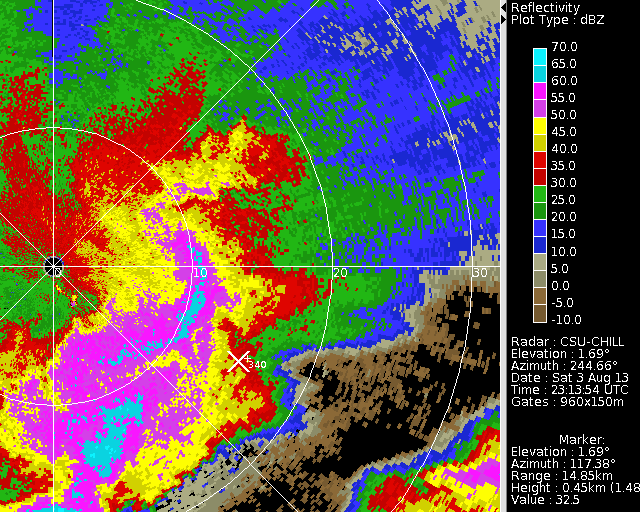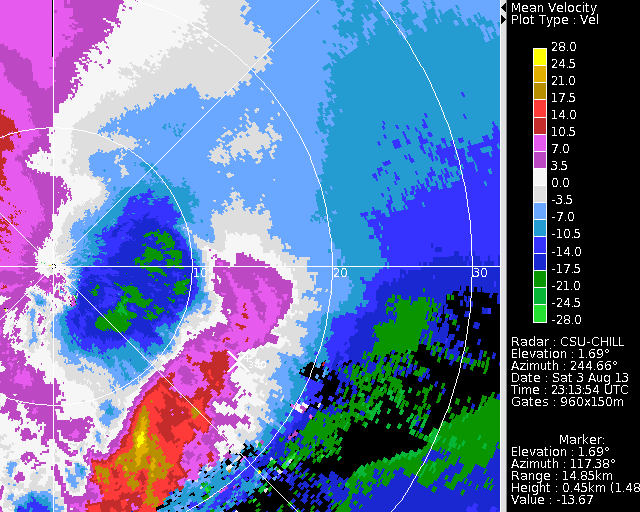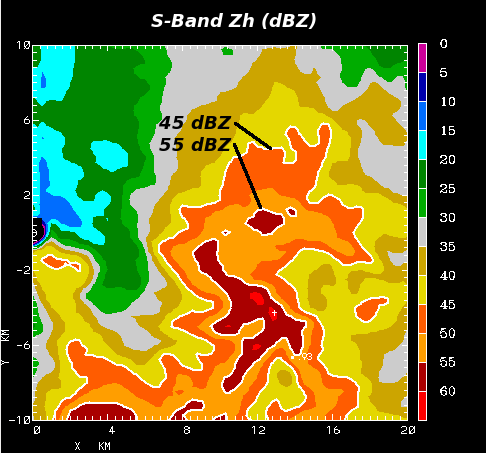DPWX/High time resolution observations of a heavy rain area: 3 August 2013
Introduction
Widespread thunderstorm activity in the CSU-CHILL coverage area during the afternoon hours of 3 August 2013. Shortly after a thunderstorm passage at the radar site, the scan regime was changed to a continuous series of 360 degree surveilance sweeps at a single elevation angle (1.7 degrees). The 6 deg per second scan rate provided a new sweep at essentially one minute intervals. This high time resolution made some aspects of the echo system evolution more evident.
Reflectivity loop
The following image loop shows the evolution of the reflectivity field at 1.7 degree elevation during the 2313 - 2355 UTC time period. At the initial time, maximum reflectivities exceeding 60 dBZ were present in the vicinity of the 10 km range ring. This high reflectivity area gradually moved eastward and weakened over the duration of the image loop. A portion of the high reflectivity area affected Weld County station number 340 of the Community Collaborative Rain, hail and Snow Network (CoCoRaHS), marked near the white cross symbol in the images. Differential echo motions produced a counter-clockwise echo motion pattern in the area located just northwest of station 340.
|
|
||
|
Radial velocity loop
The following loop shows the radial velocity patterns recorded during the same time period as the above reflectivity loop. In the begining of the loop, a well defined divergence signature was present near the 10 km range ring. (Positive / outbound / red-yellow colors at greater ranges and negative / inbound / blue-green colors at closer ranges along radials in the southeast azimuth quadrant.) With time, this divergence signature fades and the general negative / inbound radial velocities associated with the ambient easterly low level flow becomes predominant.
|
|
||
|
Large specific differential propagation phase (Kdp) magnitudes
|
|
||
|


